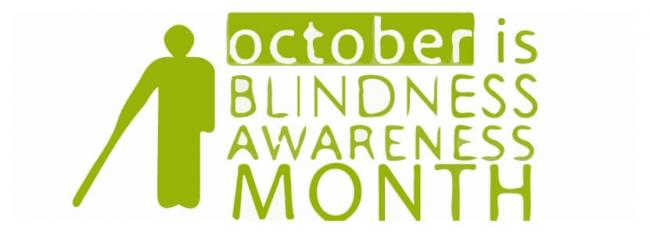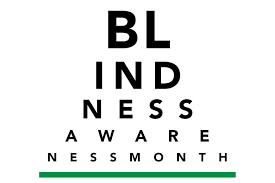
by Mike Walsh, Chief Programs Officer, Lighthouse Central Florida
Most people don’t realize that a person can have 20/20 vison and still be blind. In fact the range of visual abilities that fall within the legal definition of blindness is very broad. A person is considered legally blind when vision cannot be corrected to better than 20/200 with typical corrective lenses.
 The top number in an acuity ratio refers to the distance at which the acuity measurement was taken - standard is 20 feet. The bottom number compares the patient’s vision to the distance at which a person with typical good vision could see that same object. So a person with 20/200 vision would need to be only 20 feet away from the same thing that a person with “normal” vision could see from 200 feet away. This individual might be able to travel familiar or relatively simple environments with relative ease but have difficulty reading, recognizing people or adjusting to changes in lighting.
The top number in an acuity ratio refers to the distance at which the acuity measurement was taken - standard is 20 feet. The bottom number compares the patient’s vision to the distance at which a person with typical good vision could see that same object. So a person with 20/200 vision would need to be only 20 feet away from the same thing that a person with “normal” vision could see from 200 feet away. This individual might be able to travel familiar or relatively simple environments with relative ease but have difficulty reading, recognizing people or adjusting to changes in lighting.
One of the biggest challenges of this type of vision loss is that others often don’t understand (and sometimes judge) because people in this group apparently do so many things visually, but then struggle or use a white cane at other times.
Most surveys and studies indicate that the majority of people in the United States with vision loss are adults who are not totally blind; instead, they have what is referred to as low vision. You may have heard the terms "partial sight" or "partial blindness" or even "poor vision" also used to describe low vision. Those descriptions are no longer in general use, however.
Here is one definition of low vision, related to visual acuity: Low vision is a condition caused by eye disease, in which visual acuity is 20/70 or poorer in the better-seeing eye and cannot be corrected or improved with regular eyeglasses. (Scheiman, Scheiman, and Whittaker)
Not all eye care professionals agree with an exclusively numerical (or visual acuity) description of low vision. Here's another — more functional — definition of low vision: Low vision is uncorrectable vision loss that interferes with daily activities. It is better defined in terms of function, rather than [numerical] test results. (Massof and Lidoff) In other words, low vision is "not enough vision to do whatever it is you need to do," which can vary from person to person.
Another way a person can be identified as legally blind is when the field of vision is less than twenty degrees. A normal binocular field of vision is approximately 120 degrees. If a person’s field limitation happens to leave the central part of the field (straight ahead) intact, as can happen with glaucoma for example, that individual could still have very good acuity, but face challenges and even dangers navigating in a dynamic environment involving traffic, crowds or dim lighting. Imagine standing at a busy intersection looking through a paper towel roll and being able to see the pedestrian signal tell you it’s time to cross. Ready?
Let’s re-think the use of the words blind or blindness. They are outdated labels, laden with misconceptions. And they do not reflect the facts about vision loss in our country. Few people today are totally without sight. In fact according to the American Foundation for the Blind, “85% of all individuals with eye disorders have some remaining sight; approximately 15% are totally blind.”
Let’s agree to broaden our understanding and recognize that people with vision loss – of whatever degree, from whatever cause and of any age – can live full, productive, engaged and happy lives.
Lighthouse Central Florida has been helping people adjust to their vision loss for almost 50 years. Our services are available to people of all ages and with any degree of vision loss. If you or someone you care about is experiencing difficulty because of changes in their vision, please reach out to us.
Find out more: CONTACT US!
If you are a medical professional and have a patient you would like to refer for low-vision services, please visit: VisionRefer.
- sharju1's Blog
- Log in to post comments

